One book, two classrooms, three hard truths
Posted by Remya Padmadas on September 20, 2017Nandita Jayaraj is a science writer and storyteller based in Bengaluru. She co-founded 'The Life of Science' project where she travelled to laboratories around India tracking the lives and research of the scientists who work in them. She has written Arya in the Cockpit and Raju's First Flight for us and took these stories to two classrooms in Mangalore. Read on to find out what her experiences were.
When a friend invited me to Mangalore to read out my first ever children’s book - published on Pratham Books’ StoryWeaver platform - I said yes without thinking twice. After all, I’d grown up reading to my little brother and now my nephew and each story I write or edit is accompanied by many sessions of reading out aloud to myself, so how different could it be in a classroom? It was only a day or two prior to the event, when I actually begun to envision the scenario that awaited me, that I started to get somewhat concerned - maybe I wasn’t as prepared for this as I’d thought.
There were two storytelling sessions I’d agreed to do - one was at Early Learning Centre, a Montessori school run by Sonia and Vijay Moras in Mangalore, and the other one was at St. Peter Higher Primary School, a nearby government school which ELC supports. To my humongous relief, the day went very satisfactorily. Both sets of kids were in that early part of childhood when they are easily enthralled and young enough that I didn’t feel self-conscious about clowning around. ELC did a fantastic thing by printing out copies for all the children so they could look at pictures and take the story home with them.
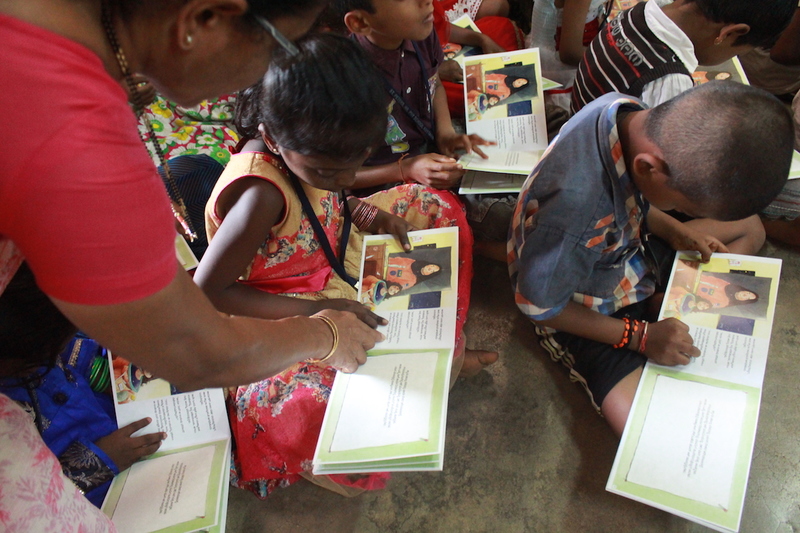
As well as the day went, I couldn’t help but go back home feeling thoughtful and a little guilty about all the preconceived notions I had been harbouring about the way children react to stories. While writing and editing children’s stories, I have always tended to base my instincts on the experiences I’ve had reading out to the children in my family. The Mangalore experiences definitely taught me a thing or two and I know I this will impact the way I deal with children’s content in the future.
What I read out to the kids was actually a pair of stories (which will eventually be two parts of the same book) - Arya in the Cockpit and Raju’s First Flight. I had written these for StoryWeaver under the theme of women who “fly”. The former follows the life of Arya as her dream to take to the skies evolves as she grows up. The latter works sort of as a primer to the second- it features Arya’s younger brother who is looking forward to take his first ever aeroplane ride on his way to meet his sister after a period of separation. This story ends with a twist - as it is revealed that his sister is the pilot of the very plane he is about to travel on.
This is where I learned my first lesson - what I fancied to be a clever twist that makes for a great story needn’t work for children with the same dramatic effect as I’d imagined. It works for children reading the book themselves, but in a classroom setting with younger kids who are being told the story, a realised I had to go a step further - be a bit more explicit, more grandiose - as it was, the text was too subtle.
These kinds of improvisations are what make a great storyteller, and I was humbled by the realisation that I was far from one. Nevertheless, I was able to catch on to this just early enough in the reading to add in some elements and ensure that the kids understood what was going on. The sister wasn’t just waiting for Raju at the end of his flight, she was in the flight, flying the plane! I may not have gotten the ‘oohs’ and ‘aahs’ I was going for, but they were amused enough - phew!
The second big lesson I learned was the presumptuousness with which I assumed a story written in English will be enjoyed just as much by non-speakers of the language. The government school was a Kannada medium one, but I was told that the students would be in in 2nd and 3rd grade and so would have a basic understanding of English. Nevertheless, ELC had organised for one of their teachers, Jayashree Guruprasad, to read out the Kannada translation (by Brinda N Rao) after I was done reading the English one.
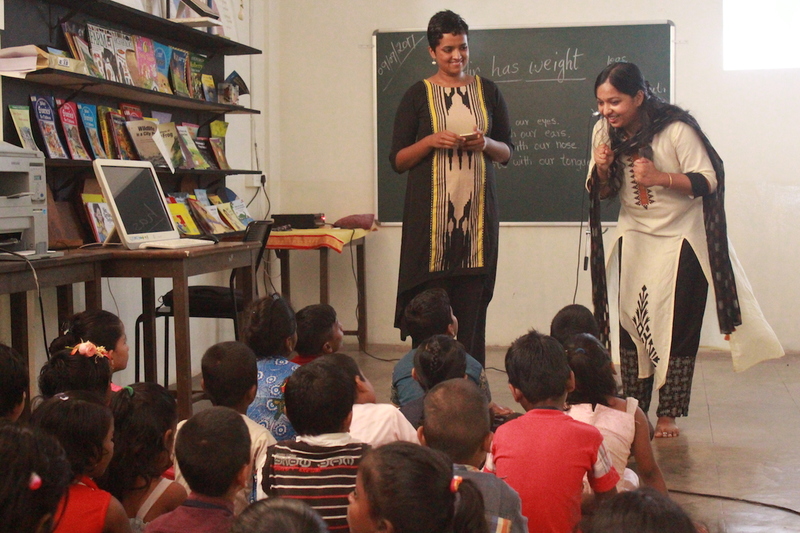
While the classroom was being set up I tried to break the ice with the kids and quickly realised that their level of English was nowhere near my understanding of ‘basic’. I suggested to Jayashree that she translate side-by-side instead of at the end and that made a big difference. The children were able to appreciate the flow of the story much better - if I had dumped that entire load of English on them, they would surely have been lost and bored, just as I would have if someone read out a whole story to me in Kannada (which I would argue I have a somewhat basic understanding of). The books given to these kids were the Kannada version. Even though it worked out, I came out with an enhanced appreciation for short sentences. There was also an opinion that the translation was somewhat too literal and the language ‘can be more colloquial, the way we speak’. I promised to pass on the feedback to Pratham Books.
My final lesson was the stark differences in lifestyles between the two groups of kids. At both venues, I started off the storytelling with talking about aeroplanes in general. These conversations with the kids before commencing the book really helped me gauge the audience. As expected, at the government school, none of the children had ever been in or even seen a plane up close - though they all were very excited by the prospect of travelling in one some day. They seemed unfamiliar with terms such as ‘cockpit’ and ‘airhostess’, so when I told the story, I avoided some words.
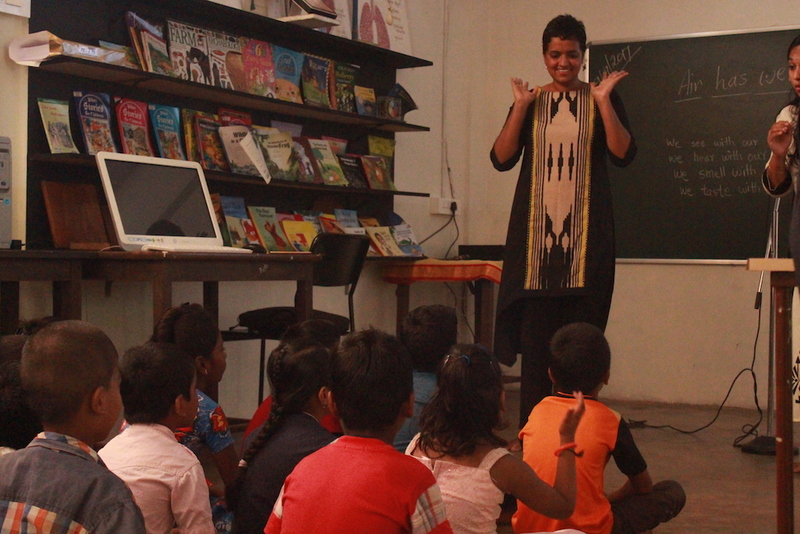
At the Montessori school, a majority of the crowd had been inside an aeroplane and were much more knowledgeable about aspects of flying that I would most definitely not have known in their age. Quite a few were familiar with concepts like the cockpit, the retractable wheels of an aircraft, etc., and many were enamoured by possibilities like the plane crashing (this came up an alarming number of times during the reading)!
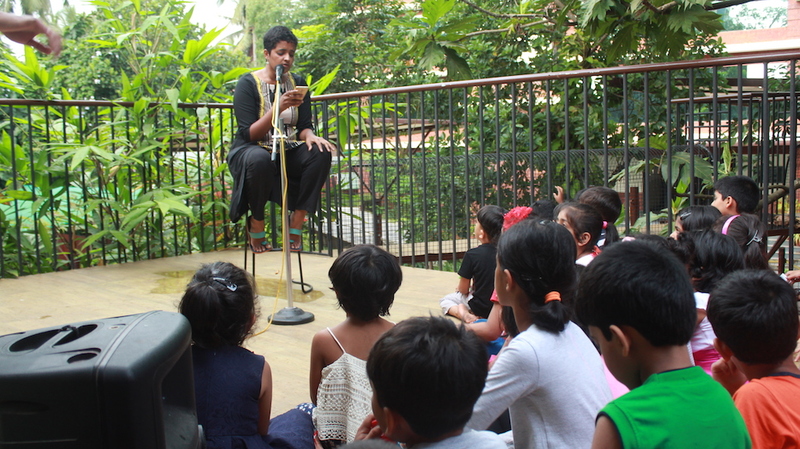
There was so much to take away from the storytelling experience and I definitely think producers of children’s content - especially ones starting out - have a LOT to gain by reading in different types of classrooms to see for themselves whether what we think works is actually working. Even if to a certain extent I knew of these good practices and my editors at StoryWeaver have emphasised it to me repeatedly, it only really hit me when I saw the proof in front of my eyes. And as a complete storytelling newbie I can confirm that this is not as scary as it sounds and if you make an effort, chances are the young kids will love you anyway.
(Photos by Girish.)
Be the first to comment.Teachers discover their inner child at StoryWeaver workshop!
Posted by Remya Padmadas on September 12, 2017Ankit Bhuptani of VIDYA, writes about a recent StoryWeaver workshop he conducted with his colleagues in Dahod, Gujarat.
I recently got an opportunity to facilitate a workshop on StoryWeaver with my colleagues Jayshree Murali and Sangeeta Gupta at Sri Sri Ravishankar Vidya Mandir, Dahod, Gujarat on 16th July 2017. Our session was was part of larger 2 day workshop on ‘Language Learning’ conducted by my organization VIDYA. VIDYA is a not-for-profit working with children, adolescents and youth in the urban slum communities of Delhi, Gurgaon, Mumbai, Bangalore and Pune. This is our 31st year having been seeded in Delhi in the home of our Founder Rashmi Misra. We have a holistic approach to education with a focus on academics, life skills and digital empowerment.
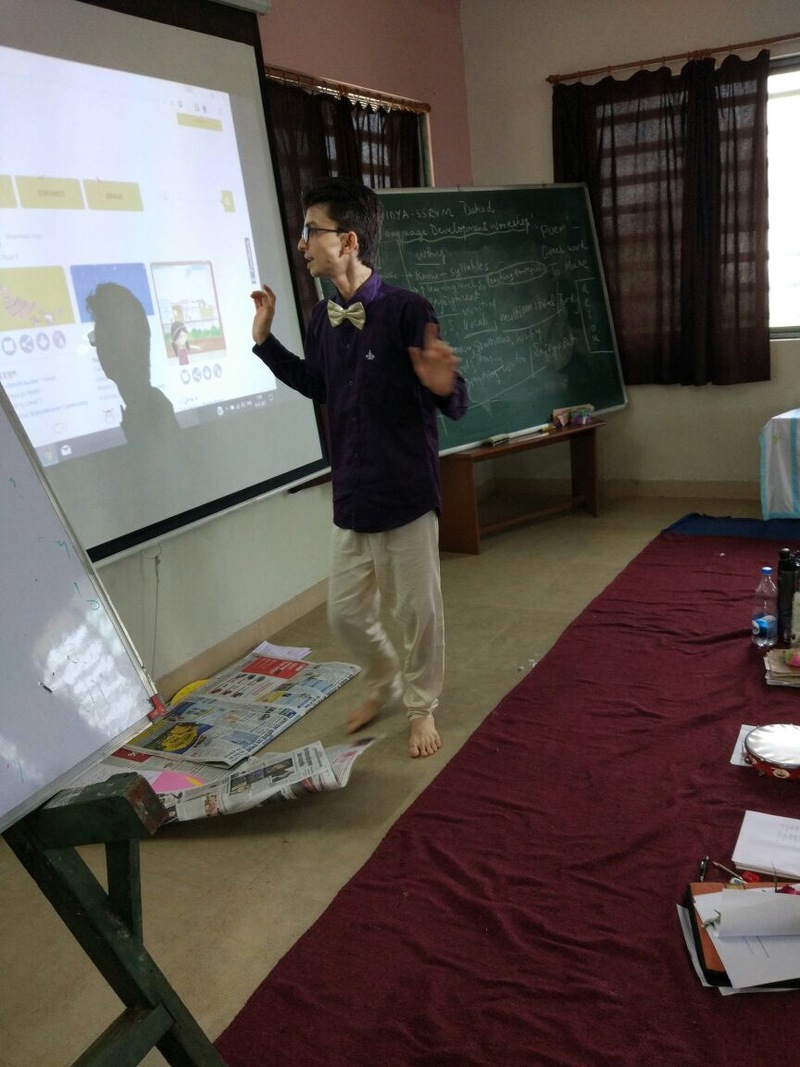
The workshop started with an introduction to the StoryWeaver platform using a short video. After this, we explored the ways to find an ideal story for the class and read a bilingual story together followed by a session on how to translate stories. This happened in small groups of 5 teachers each who logged-in on the platform and translated a story. Now was the time to create our own. But….. suddenly the power was gone! And we had to find our own ‘power'!
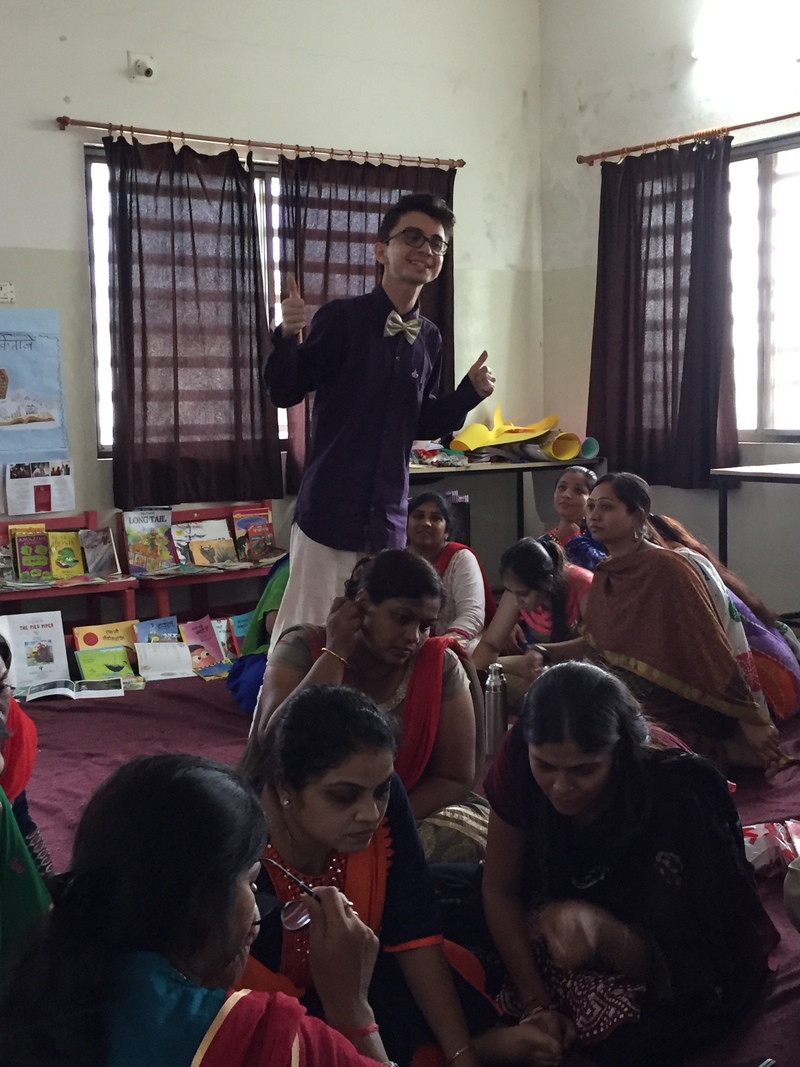
What fun it was to weave and spin a story based on the pictures which we had downloaded from very rich picture pitara of StoryWeaver. The story was about two children Pinku and Pinky who go to a jungle in search of their cat Biladi. All the teachers were immersed and the child in them surfaced.
The whole workshop not only helped teachers to understand the platform of StoryWeaver but also helped to develop important teaching skills like group building and critical thinking. The teachers felt that integrating technology in the classroom via stories was a brilliant idea.
Be the first to comment.A day of celebrations: StoryWeaver turns two this International Literacy Day
Posted by Remya Padmadas on September 08, 2017September is a special month for us at Pratham Books, especially September 8th! International Literacy Day, not only marks our annual storytelling event One Day, One Story, but it is also the day StoryWeaver was launched.
When we launched, our goal was to create a participatory framework where content creators and users could collaborate with each other to create joyful reading material in multiple languages. We believed this would have a multiplier effect to address the scarcity of multilingual reading resources that exists in India.
The last two years have been an amazing journey. When StoryWeaver was launched, we offered 800 stories in 24 languages. Today, the platform is a buzzing hub of over 4700 in 91 languages. What makes StoryWeaver a truly special place though is our community. The authors, illustrators, translators, editors, art directors, teachers, librarians, literacy organisations and parents who are helping Pratham Books strive towards our mission of 'a book in every child's hand.'
It's the stories, videos and photographs from these passionate and committed folks that keep us going. Non-profits like Suchana and the Azad India Foundation, translating stories to tribal languages and dialects for the children they work with. Organisations like Pragat Shikshan Sanstha, Tamarind Tree and Akanksha curating reading lists and creating digital libraries for teachers and students. Edtech companies like mGuru who gamify our content for mobile learning apps, and Bookshare who is creating audio and braille books for print impared students. These are just a few examples of the amazing things openly licensing content can achieve. And how can we not mention the many individuals who are creating magic on the platform every day with the stories they create and translate?
To each of you who are a part of our community, a big, big, big THANK YOU!
Here's to more stories, in more languages, reaching more children!
Be the first to comment.